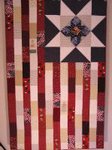This year began with a breast implant scandal. This one has brought back memories of the one early in my private practice.
The current one involves the PIP-branded breast implants produced by the French company Poly Implant Prothese and rebranded by the Dutch company Rofil as Rofil M-implants breast implants. The first one involved silicone implants made by American companies including Dow Corning who no longer makes breast implants.
This picture of 3 implants includes: top -- an old McGhan double lumen (silicone gel implant surrounded by a saline implant); bottom left – Dow Corning textured silicone implant; and bottom right – Dow Corning smooth silicone implant. Dow Corning has not made breast implants since approximately 1992.
My post
Breast Implants -- Some History (March 3, 2008) covers much of the history of implants in the United States. Kira Cochrane, The Guardian, wrote about the first patient to receive a breast implant:
It was in 1962 that Timmie Jean Lindsey was offered a solution to a non-existent problem. A factory worker from Texas, ….. And the doctors had another proposal. Had she ever thought about breast implants?
Lindsey had not. ….
……...She's 80 today, still living in Texas, working night shifts in a care home, and those first, experimental globes remain in her chest. ……
I would love to know if they are soft or have become hardened by capsular contractures. The article doesn’t say.
In the current breast implant scandal, I haven’t noticed anyone urging a class action lawsuit against the French company Poly Implant Prothese or the Dutch company Rofil. The big issues are 1. do the implants need to be removed or just checked and 2. who will pay for the removal, the government or the private clinics. The issue isn’t just a European one, it affects women in South American, Mexico, and the United States.
The old scandal in the early 1990s was handled by a class action lawsuit. I had not been in practice long enough for it to truly affect my then current patients, but I saw many who’s doctors were no longer in practice or non-plastic surgeons who has decided due to the scandal to quit doing breast implants. I did exams for free, but not the surgeries. I did, however, not raise prices or take advantage of the situation.
When I was in practice, I encouraged my breast implant patients to return every year or two for a complimentary breast exam. This keep us in contact so if anything (ie ALCL and implants, or faulty implants) came up I had current addresses. I made sure each woman had the information on her implants and encouraged her to keep up with it. I also encouraged the
extended warranty on the implants. This helps settle who pays for what, at least for the first 10 years.
Women and their doctors need to be mindful that implants are foreign bodies we are placing into the human body. Women and their doctors should be mindful of future costs that might be incurred from breast implant surgery. In the United States, many things related to implants, especially those placed for cosmetic reasons only, are not covered by insurance or the extended warranty.
Related posts:
Breast Implants -- Some History (March 3, 2008)
FDA Updates Safety Data for Silicone Breast Implants (June 23, 2011)
ALCL and Breast Implants (January 31, 2011)
REFERENCES
1. Breast implant scandal: now women with Rofil M-implants 'are at risk'; The Telegraph, Matthew Holehouse, January 5, 2012
2. Breast implants – a brief history of the first 50 years; The Guardian, Kira Cochrane, January 11, 2012
3. Q&A: PIP breast implant s health scare; BBC Health News, James Gallagher, January 11, 2012
4. Confusion Reigns Abroad Over Faulty Breast Implants; MedPage Today, Cole Petrochko, January 13, 2012
5. PIP breast implants: European Commission says reform needed; BBC Health News, James Gallagher, January 14, 2012
6. Keeping patients safe: The case for a breast implant registry; The Atlantic, Anna Yukhananov, January 5, 2012



















